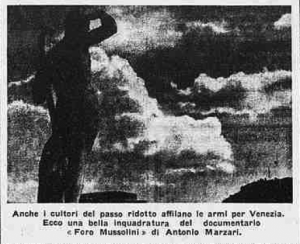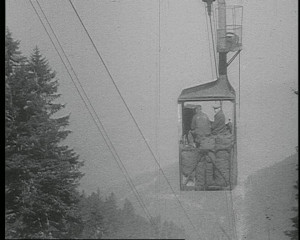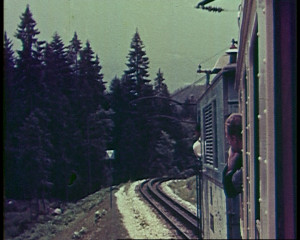
"documentario turistico"/touristic documentary
"This striking example of enthusiastic club production efforts, revolves around four amusing stories which stem from the simple theme of for chairs—each responsible for the contribution of one story and its filming. Because of the outstanding qualities of "Four Chairs", it was awarded a special cup for excellent club production" PSA Journal, Dec. 1955, 35.
"Item is a film of a trip to Spain taken by Dr. Willinsky, his wife, Sadie, and some of their friends. Despite its title, the film does not contain footage of France. In the form of a travelogue, footage of landmarks, the local population, and the Willinsky's activities are accompanied by music and Dr. Willinsky's commentary. Footage includes shots of the Square of Spain, Sadie walking along the streets of a shopping district, churches and monasteries, a boat cruise from Palma to Figuera, a spring festival procession and dancing in Majorca. Most of the scenes were taken in Palma and Majorca." Ontario Jewish Archives.

"The first film shot by Laurie and Stuart Day. The film records details of a trip to Germany in 1930 made by Laurie and Stuart Day with Laurie Day’s father, John Wood Jones" (EAFA Database).
"A film about the agricultural and horticultural work - much by hand - for the production of the county's crops." (EAFA Database)

"Record of a trip to Garmisch-Partenkirchen and the surrounding area, preceded by scenes from visits to Rüdesheim am Rhein, Wiesbaden (possibly) and the Linderhof Palace near Ettal" (EAFA Database).
"a soggetto"/fiction
"Local newsreel - includes items on the 'New World Wonder Tunnel' in Merseyside, March 31st 1934; Manchester City football team is welcomed home after winning the FA cup at Wembley - includes scenes at North Edgeley Station and Piccadilly Square - A royal visit to Manchester and Liverpool, July 17th / 18th, 1934. King George V is greeted by large crowds as he opens the new Central Reference Library in Manchester and the new East Lancashire Road in Liverpool. The newsreel concludes with shots of Stockport’s floral tributes." (NWFA Online Archive)
Total Pages: 15